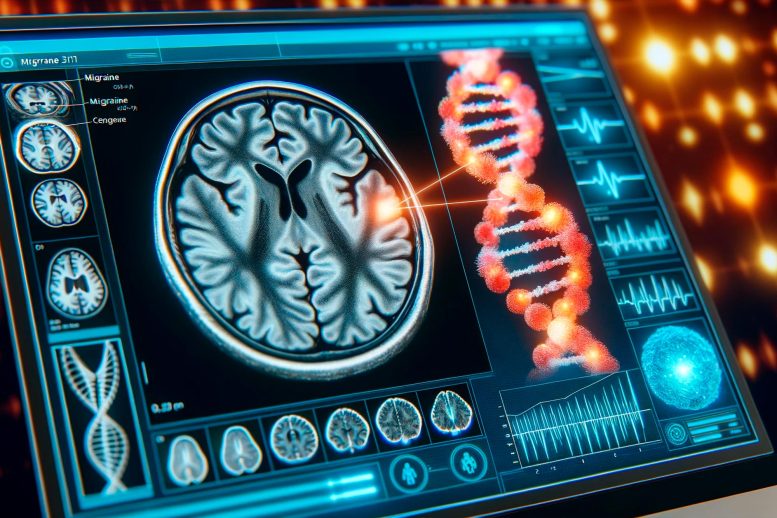
Researchers have created a detailed catalog of gene-isoform variations in the developing human brain, revealing significant implications for understanding and treating neurodevelopmental and psychiatric disorders. Their work has uncovered over 214,000 unique isoforms and highlighted the dynamic changes in isoform expression that occur during brain development. Credit: SciTechDaily.com
New study could improve the ability to make genetic diagnoses and treat neurodevelopmental disorders.
- Regulation of isoforms — varied versions of RNA and proteins that can be produced from a single gene — is a critical tool in understanding brain development and genetic risk for neuropsychiatric disorders.
- Using new sequencing technologies, UCLA and University of Pennsylvania researchers uncovered 214,516 unique isoforms in the developing neocortex — over 70% of which have not been previously studied.
- The findings could have far-reaching implications for our understanding of the brain’s maturation and in developing therapeutic trials for individuals harboring rare mutations associated with psychiatric or neurodevelopmental disorders.
Gene-Isoform Research
Researchers have produced a first-of-its-kind catalog of gene-isoform variation in the developing human brain. This novel dataset provides crucial insights into the molecular basis of neurodevelopmental and psychiatric brain disorders and paves the way for targeted therapies.
The research, led by researchers at UCLA and the University of Pennsylvania and published in the journal Science, also details how transcript expression varies by cell type and maturity. It finds that changing gene-isoform expression levels can help us better understand how the human brain develops.
The Role of Alternative Splicing
Every cell in our body contains the same genetic information encoded in DNA, but it is the expression of different proteins, encoded in mRNA transcripts, that give cells their distinct functions. These varied proteins, or isoforms, mostly arise from alternative splicing — a process that is highly prevalent in the brain and contributes to its wide range of proteins and characteristics.
“We knew, based on our previous research, that isoform regulation is a key molecular feature for understanding brain development and genetic risk for neuropsychiatric disorders,” said Dr. Luis de la Torre-Ubieta of the Eli and Edythe Broad Center of Regenerative Medicine and Stem Cell Research at UCLA, who co-led the study alongside Dr. Michael Gandal, an associate professor of psychiatry and genetics in the Perelman School of Medicine at the University of Pennsylvania.
Advancements in Sequencing Technologies
Previously, despite its prevalence, the role of cell-type-specific splicing and transcript-isoform diversity in the developing human brain had not been systematically investigated due to limitations in prior generations of sequencing technologies. Here, the researchers were able to leverage new third-generation long-read sequencing technologies to capture complete RNA molecules and profile the full-length transcriptome of two major regions of the developing neocortex: the germinal zone, which contains stem cells, and the cortical plate, which houses newly generated neurons.
This technology allowed the researchers to uncover 214,516 unique isoforms — over 70% of which have never been previously studied. They then compared the two regions of the developing brain and observed that changes in isoform expression levels are important for neurogenesis, differentiation, and cell fate — in essence, the maturation of the brain.
Implications for Neurodevelopmental Disorders
The researchers found thousands of isoform switches that occur during brain development, implicating previously uncharacterized RNA-binding proteins in cellular identity and cellular fate decisions. Their findings also elucidate genetic risk mechanisms for neurodevelopmental and neuropsychiatric disorders, including a reassessment of the significance and clinical relevance of thousands of rare genetic variants.
“We found that high-confidence risk genes for autism or neurodevelopmental disorders tend to be genes that have more isoforms, and those isoforms are expressed differently during neurogenesis,” said de la Torre-Ubieta, an assistant professor of psychiatry and behavioral sciences. “This implies that dysregulation of the expression of specific isoforms is a potential mechanism underlying these disorders.”
Access to Embryonic Brain Tissue
Scientists studying the brain often rely on publicly available catalogs of genes and gene transcripts. However, human brain tissue, particularly embryonic tissue, is difficult to access, restricting the comprehensiveness of these datasets. For this study, the researchers obtained six developing human neocortex tissue samples representing the mid-gestation period, or 15 to 17 weeks post-conception. This developmental time point in the human brain is a critical window during which the complexity of our brain — the most sophisticated organ in our body — begins to emerge.
“These tissue samples enabled a striking level of novel transcript discovery,” Gandal said. “And because these databases haven’t incorporated or represented these critical time points, we can dramatically expand our understanding of how genes are regulated in the context of human brain development.”
Therapeutic and Diagnostic Implications
The findings from the study have strong therapeutic implications and could be clinically actionable, the researchers said. Uncovering new transcripts could pave the way for identifying novel treatment approaches in gene therapy trials or targeted therapeutic trials for individuals harboring rare mutations associated with psychiatric or neurodevelopmental disorders.
In the nearer term, the data also has direct implications in improving our ability to make genetic diagnoses of neurodevelopmental disorders. Because the study found several thousand genetic variants that are more impactful than previously thought, families or individuals carrying those variants can better understand how their children might be predisposed to certain disorders.
Gandal has shared the dataset with several colleagues at the Children’s Hospital of Philadelphia, which has a large population of children with rare neurodevelopmental disorders or undiagnosed disorders in development. Physicians there are already using this resource to help better interpret neurogenetics diagnostically.
“I’m really excited to leverage this resource to help patients,” said Gandal, who is also a practicing psychiatrist. “Having this knowledge brings us one step closer to being able to develop targeted treatments and understand genetic mechanisms in a much more specific way.”
Reference: “Developmental isoform diversity in the human neocortex informs neuropsychiatric risk mechanisms” by Ashok Patowary, Pan Zhang, Connor Jops, Celine K. Vuong, Xinzhou Ge, Kangcheng Hou, Minsoo Kim, Naihua Gong, Michael Margolis, Daniel Vo, Xusheng Wang, Chunyu Liu, Bogdan Pasaniuc, Jingyi Jessica Li, Michael J. Gandal and Luis de la Torre-Ubieta, 24 May 2024, Science.
DOI: 10.1126/science.adh7688
Other UCLA authors include Ashok Patowary, Pan Zhang, Celine K. Vuong, Xinzhou Ge, Kangcheng Hou, Minsoo Kim, Michael Margolis, Bogdan Pasaniuc and Jingyi Jessica Li. Connor Jops, Naihua Gong, Daniel Vo, Xusheng Wang and Chunyu Liu contributed to this study.
The research was supported by the Simons Foundation Autism Research Initiative, the National Institute of Mental Health, the National Science Foundation and the UCLA Medical Scientist Training Program.




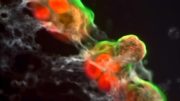
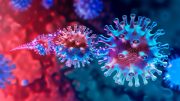

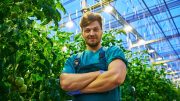
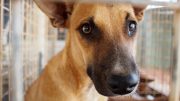
That’s all purely academic. A “promise” of something based on posh lingo and fancy mechanisms. No matter what they can prove in a lab, and I’m judging based on the case of mRNA jabs, in reality the treatments will prove to be expensive or unreliable or harmful or all three.
Maybe medicine will do well to leave us alone for a bit.